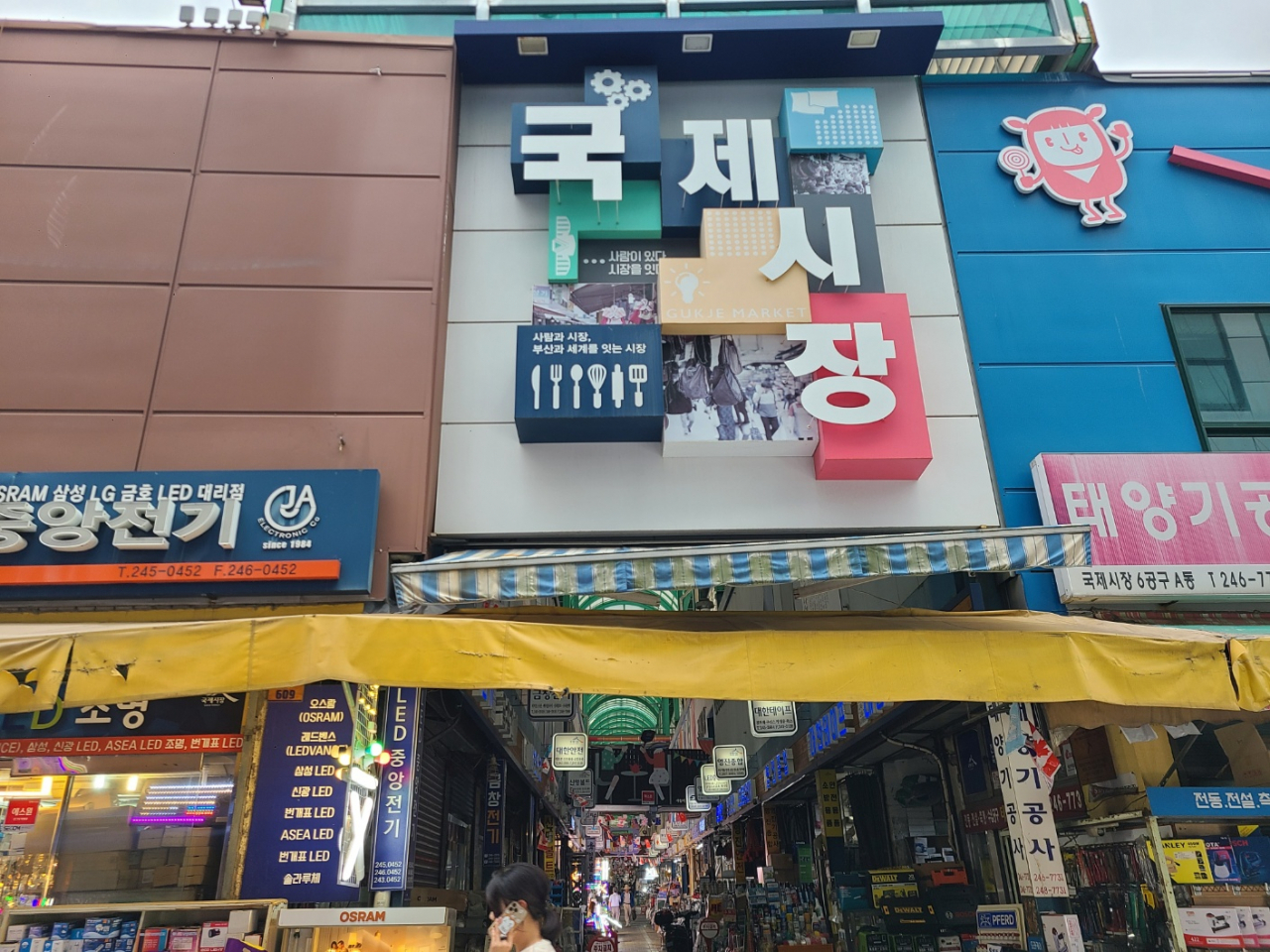 |
An entrance to Gukje Market in Busan (Jung Min-kyung/ The Korea Herald) |
Jagalchi Station, on Busan Metro Line No. 1, is where one can find some of the seaside city’s oldest, largest and most famous markets, including the famed Jagalchi Market.
As such, the station is always bustling with tourists, all hoping to soak up the authentic Busan atmosphere and try a wide array of delectable seafood dishes and street snacks.
The Gukje, Bupyeong and Jagalchi markets -- all located within a few blocks from each other -- are famous for their decades-old stores and businesses. More recently, a fresh wave of younger merchants is reshaping the dynamics of the market scene.
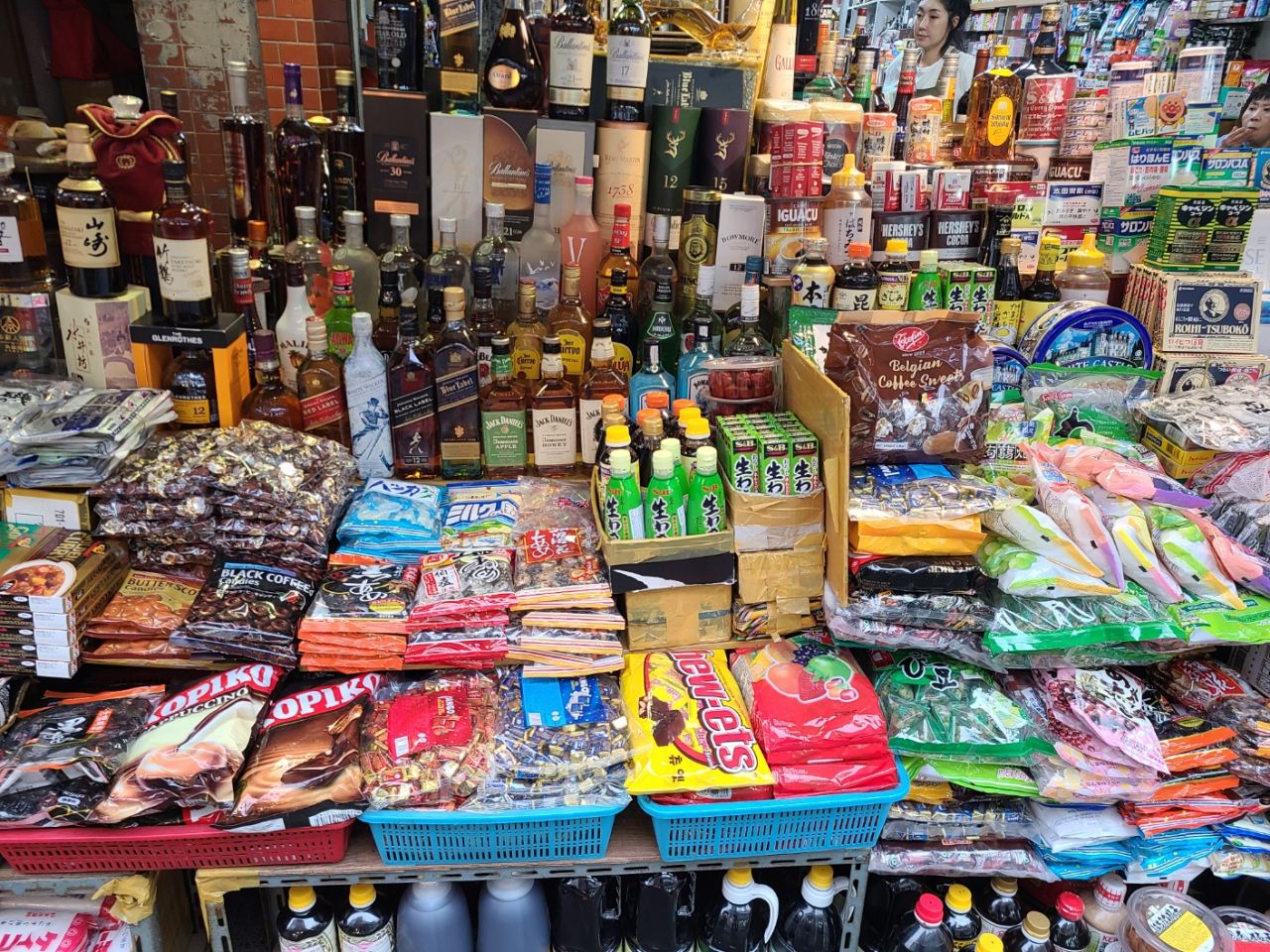 |
US and Japan-made and imported products are sold at a shop in Gukje Market. (Jung Min-kyung/ The Korea Herald) |
Gukje Market
Gukje Market, the largest of the three markets near the subway station, has a name worthy of its history. "Gukje" in Korean means "international."
The market was formed in the aftermath of the 1910-1945 Japanese colonial rule of Korea and saw swift growth during the chaos of the 1950-53 Korean War.
The port city, which served as the temporary capital during the Korean War after Seoul was taken over by the North, also brought more people into the market.
After the war, as poor Koreans toiled day and night to feed their family, Gukje Market was where people traded all sorts of products -- many shipped from the US and Japan.
Until the late 1990s and early 2000s, before the rise of the internet made the purchasing of overseas goods easier, it was the place where people headed to buy imported goods. It was a typical "doddaegi” mart -- a market that sells everything with a very busy and loud atmosphere.
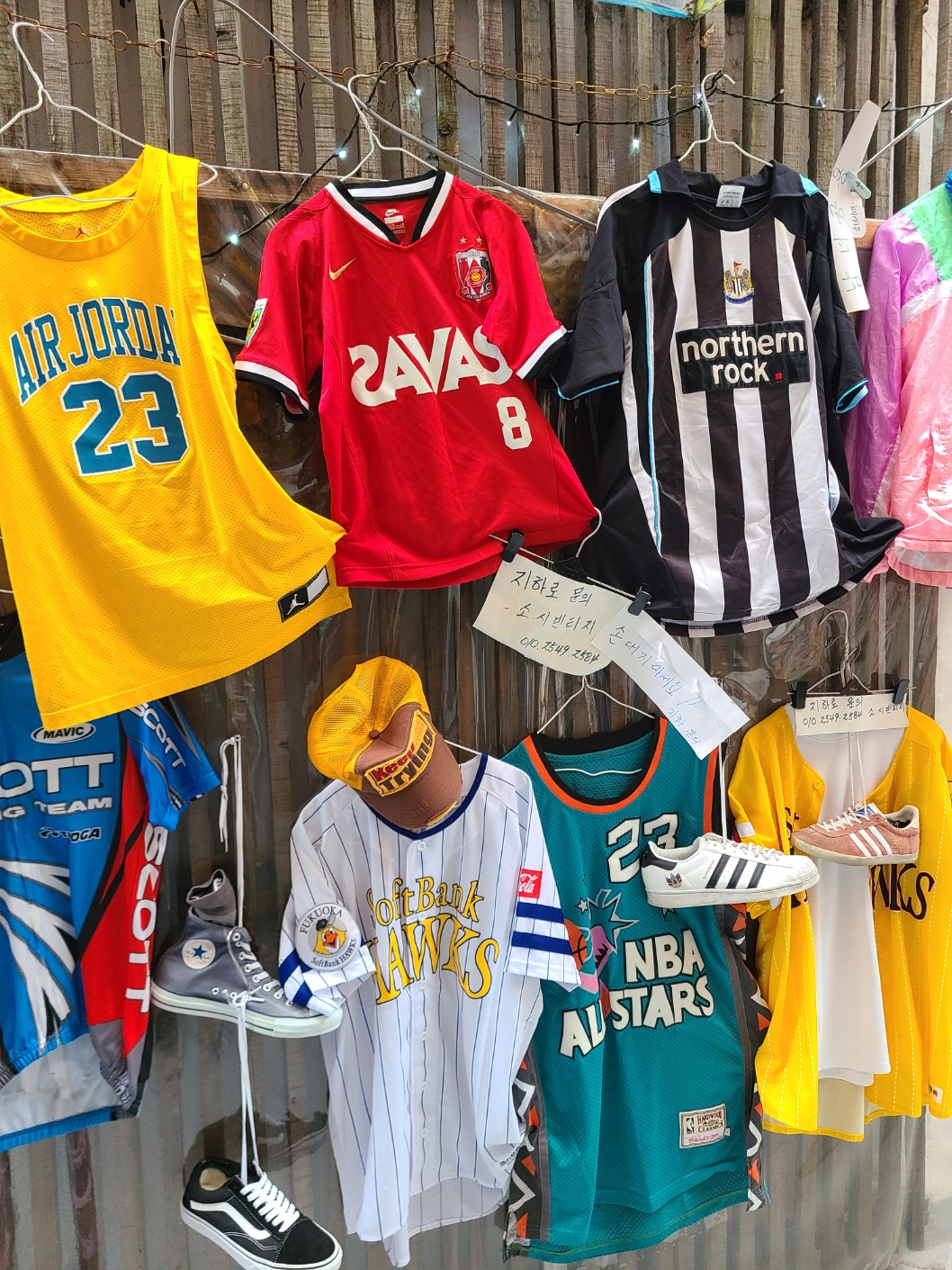 |
Vintage shops in Gukje Market (Jung Min-kyung/ The Korea Herald) |
Imported goods stores remain in business across Gukje Market, but they are slowly disappearing.
"Not a lot of people buy from our store anymore," said Lee Young-sook, a woman in her 70s who has been running a shop at Gukje Market for the past 40 years, in an interview with The Korea Herald.
Her tiny, packed store is laced with products such as Japanese snacks and US-manufactured Ivory soap bars. The price is slightly higher than the original prices they are sold in shops overseas.
“With e-commerce and so many people traveling abroad easily nowadays, business is declining," she added.
Many traditional stores in Gukje Market have gone out of business, but in their place stands a new breed of stores run by a younger generation of merchants.
Focusing on vintage clothing or Japanese anime figures, these shops clearly differ from the imported good sellers of the past. These stores are contributing to the revitalization of Gukje Market, attracting younger shoppers.
"I came here today to do some thrift shopping," said Kim Min-young, a 21-year-old university student in Busan.
"It's a place where I can have fun shopping at a decent price. It is a good location to hop over to the Bupyeong Kkangtong market for a quick snack."
With over 500 stores spanning across 7,197-square-meters of land, it attracts over 20,000 visitors daily, according to information provided by the Busan Metropolitan Government.
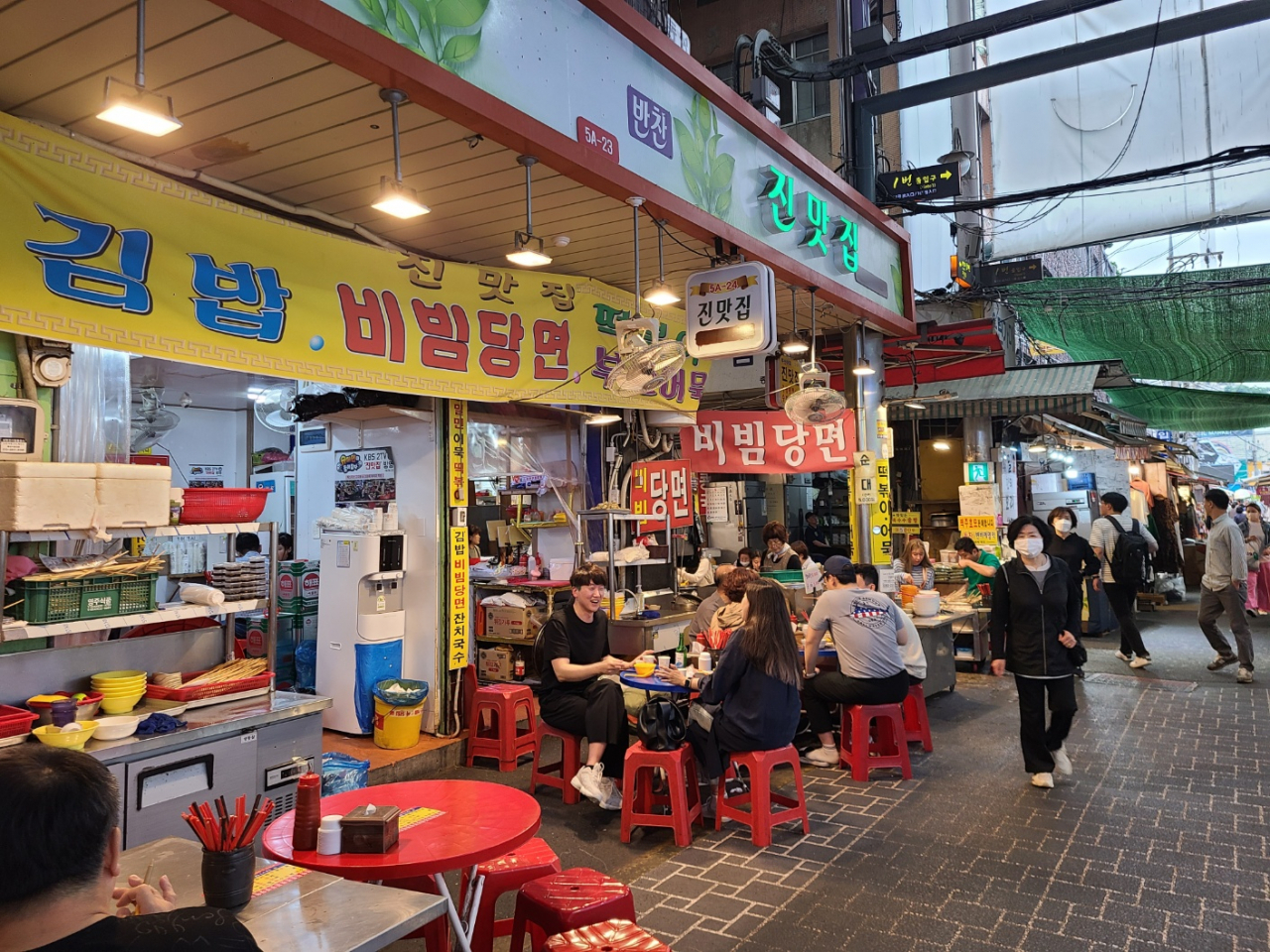 |
Visitors dine at a restaurant at Bupyeong "Kkangtong" Market. (Jung Min-kyung/ The Korea Herald) |
Night market snacks
Bupyeong "Kkangtong" Market, located adjacent to Gukje Market, is widely known for its delicious snacks.
Some of the most coveted snacks are samgyeopsal gimbap -- seaweed rice rolls with a grilled pork belly filling -- and tteokbokki -- rice cakes fried in spicy chili sauce.
Established in 1910 as a food market, it earned its nickname "kkangtong" after Koreans started selling and buying US-manufactured canned foods in the market during and following the Korean War. "Kkangtong" means "can" in Korean.
Like many other traditional markets in the city, Bupyeong market has been struggling since the 2000s, following the rise of conglomerate-owned supermarket chains.
However, in 2013, the market started to attract new visitors and tourists by opening night markets. Nighttime vendors, selling street food and handmade goods run their shops from 7:30 p.m. to 11:30 p.m.
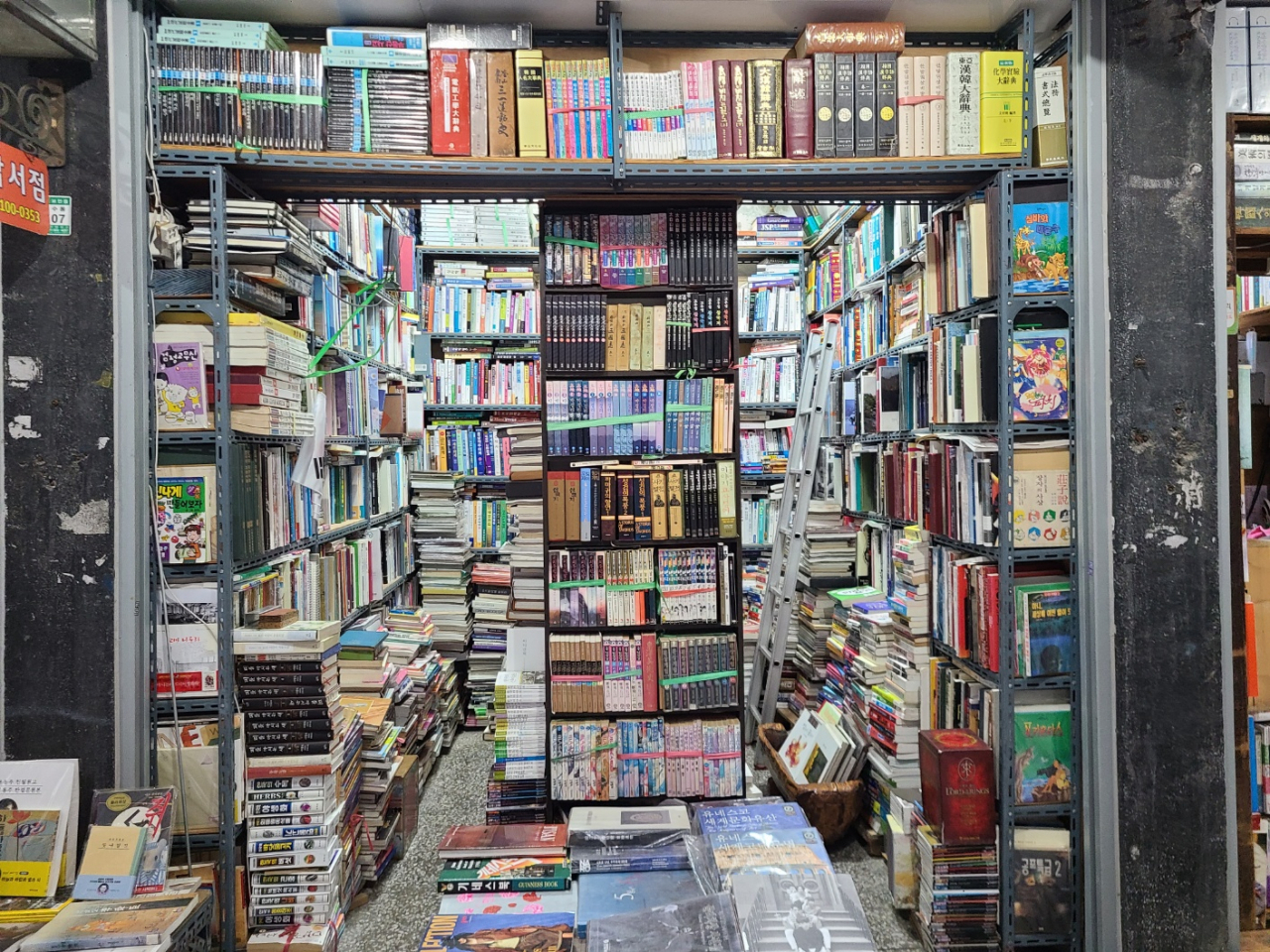 |
Used books are sold in Bosu-dong Book Street. (Jung Min-kyung/ The Korea Herald) |
Books frozen in time
Bosu-dong Book Street is an alley located north of Bupyeong Market. It is where visitors can travel back in time through piles of used books, including old textbooks, children's books, comic books, English novels, magazines and more. Some are a few decades old.
Visitors can find joy in scavenging for literary gems that might have bigger values when resold online. They can also sell their own books in exchange for some extra cash.
Though their operating time varies day by day, the bookstores usually open early in the morning and close before 6 p.m.
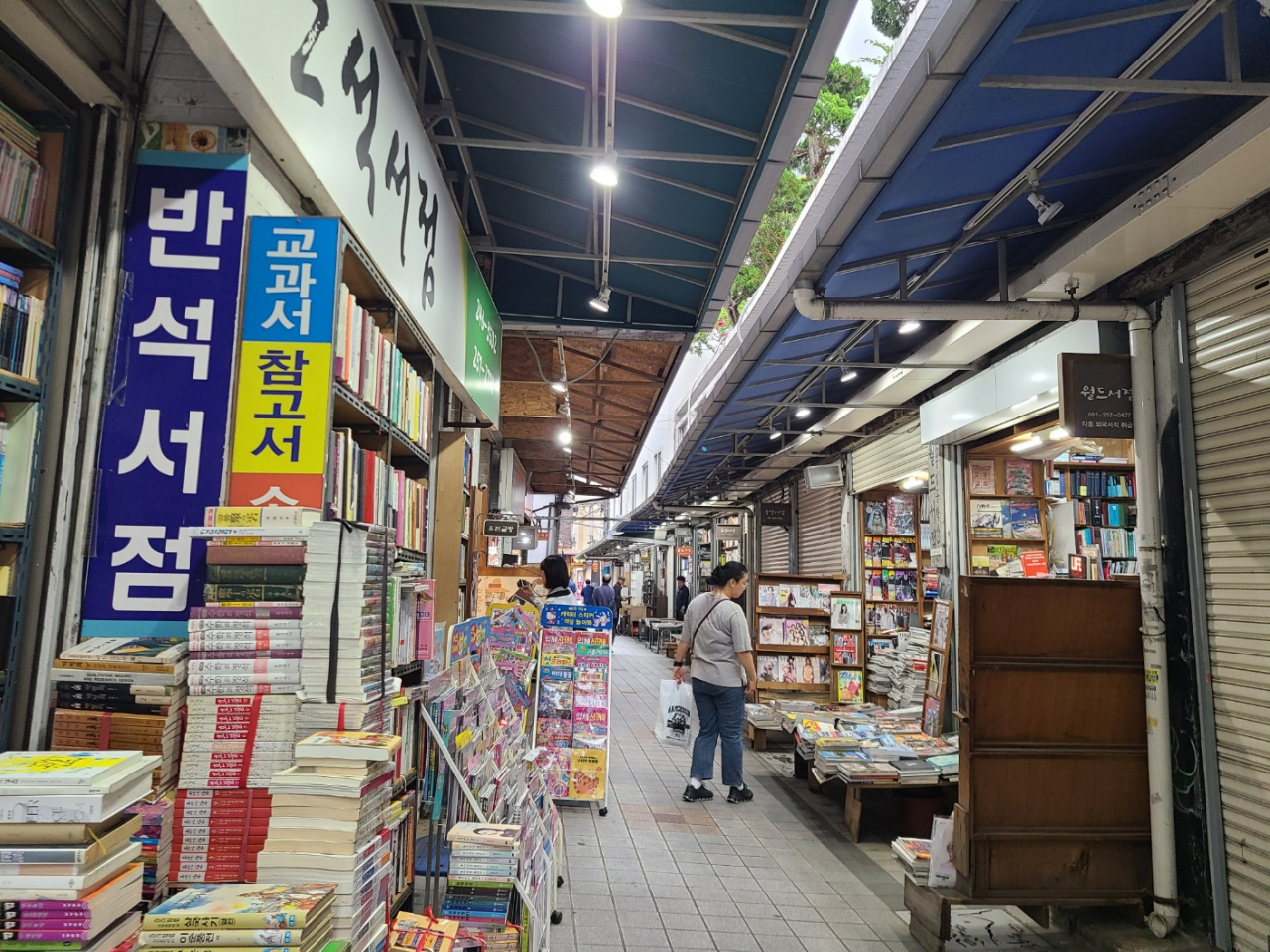 |
Used books are sold in Bosu-dong Book Street. (Jung Min-kyung/ The Korea Herald) |
There are several cafes on the street where visitors can sit and relax while reading their newly purchased used books.
In the early 2010, there used to be some 50 stores operating in the alley. Now, their number has reduced to less than 10, as the bookstore industry as a whole -- for new titles and used ones -- has taken a hit due to competition from online sellers.
The Busan Metropolitan Government explains that the Bosu-dong book alley started with a refugee couple from North Korea during the Korean war who sold magazines and old books in the area. Over time, the alley became a hub of secondhand book stores who played a role, knowingly or unknowingly, in supporting many impoverished students in their pursuit of education.



![[Weekender] Korea's traditional sauce culture gains global recognition](http://res.heraldm.com/phpwas/restmb_idxmake.php?idx=644&simg=/content/image/2024/11/21/20241121050153_0.jpg)



